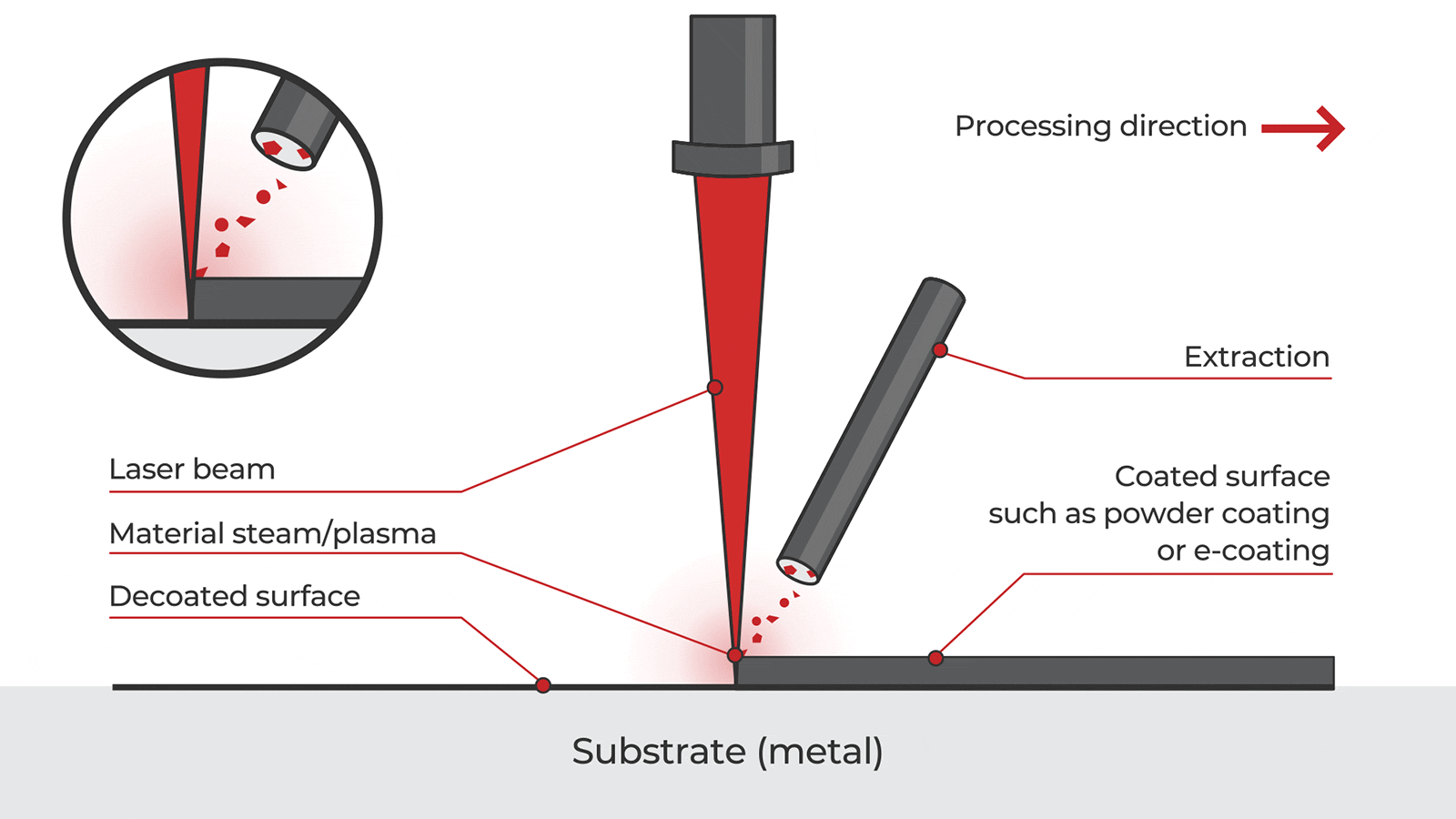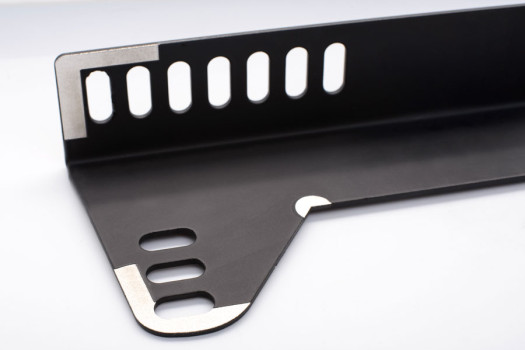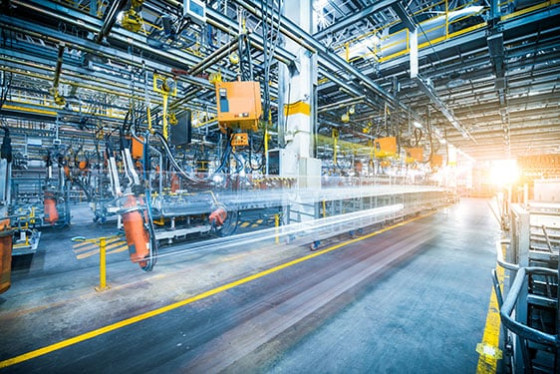How Does Laser Paint Removal Work?

Laser paint removal uses a process called laser ablation to strip paints. As paint absorbs the laser beam’s energy, its temperature rises in a few milliseconds until it reaches its ablation threshold. At this temperature, the bonds that hold paint molecules together break, and paint is ejected from the surface.
Let’s break down how it works:
- A pulsed laser beam is directed at the surface.
To achieve ablation, the laser energy is released in short pulses and at a set repetition rate. Pulsed laser beams are ideal to reach the high energy needed for ablation. You can learn more about pulsed laser ablation here. - The paint absorbs the laser beam’s energy.
All materials absorb and reflect laser light at different rates. The type of paint strongly influences how much laser light is absorbed and, thus, the speed at which paint is removed. - The paint undergoes sublimation as its temperature rises.
Sublimation is when a material directly goes from solid to gas without going through its liquid phase. This happens because the rise in temperature is too fast. Factors that affect the rate at which paint is sublimated include the paint thickness and the paint’s specific ablation temperature. - Dusts and gases ejected from the surface are extracted.
When the bonds that hold paint molecules break, dusts and gases are ejected into the air. Efficient fume extraction is essential to guarantee the safety and consistency of the process
















